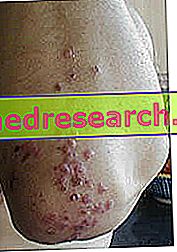Related articles: Duchenne dystrophy
Definition
Duchenne dystrophy is a congenital muscle disease, which occurs in early childhood with progressive weakness, delayed walking and frequent falls.
This pathology is caused by alterations of one or more genes necessary for normal muscle function, inherited from the mother in 2/3 of the cases.
In Duchenne dystrophy, in particular, a mutation is found at the Xp21 locus, which causes the absence of dystrophin (a protein normally present in the muscle cell membrane). Females carrying this genetic anomaly may have asymptomatic elevated levels of creatine kinase (CK) and sometimes calf hypertrophy.
Duchenne dystrophy is the most frequent and severe form of muscular dystrophy.
Most common symptoms and signs *
- Muscular atrophy
- weakness
- Muscular hypotrophy
Further indications
Duchenne dystrophy typically occurs between 2 and 3 years of age, with weakness of the proximal muscles (initially of the lower limbs), and hypertrophy in the calves (due to the fibro-adipose substitution of some muscle groups).
Patients with Duchenne dystrophy exhibit lordosis and tend to walk on toes, with anserine gait. Furthermore, they fall frequently and have difficulty running, jumping, climbing stairs and rising from the ground. About one third of patients have a mild intellectual impairment that mainly affects verbal capacity.
The evolution of weakness is constant due to the degeneration of muscle fibers and leads to the development of flexion and scoliosis limb contractures.
Most patients with Duchenne dystrophy die at age 20 due to respiratory complications, lung infections or heart failure.
The diagnosis is suggested by the characteristic clinical findings and the family history of recessive inheritance linked to the X chromosome. The CK levels are high (the value is up to 100 times higher than the norm). Muscle alterations are assessed by electromyography and biopsy, an examination that demonstrates the presence of necrosis and marked alteration in the size of muscle fibers. The diagnosis of Duchenne dystrophy is confirmed, therefore, with the immunohistochemical demonstration of the absence of dystrophin in the biopsy sample.
Treatment aims to maintain function through physiotherapy and the use of orthopedic braces and supports; prednisone is given to some patients with severe functional deterioration. In families where a case of muscular dystrophy occurs, genetic counseling is indicated.



